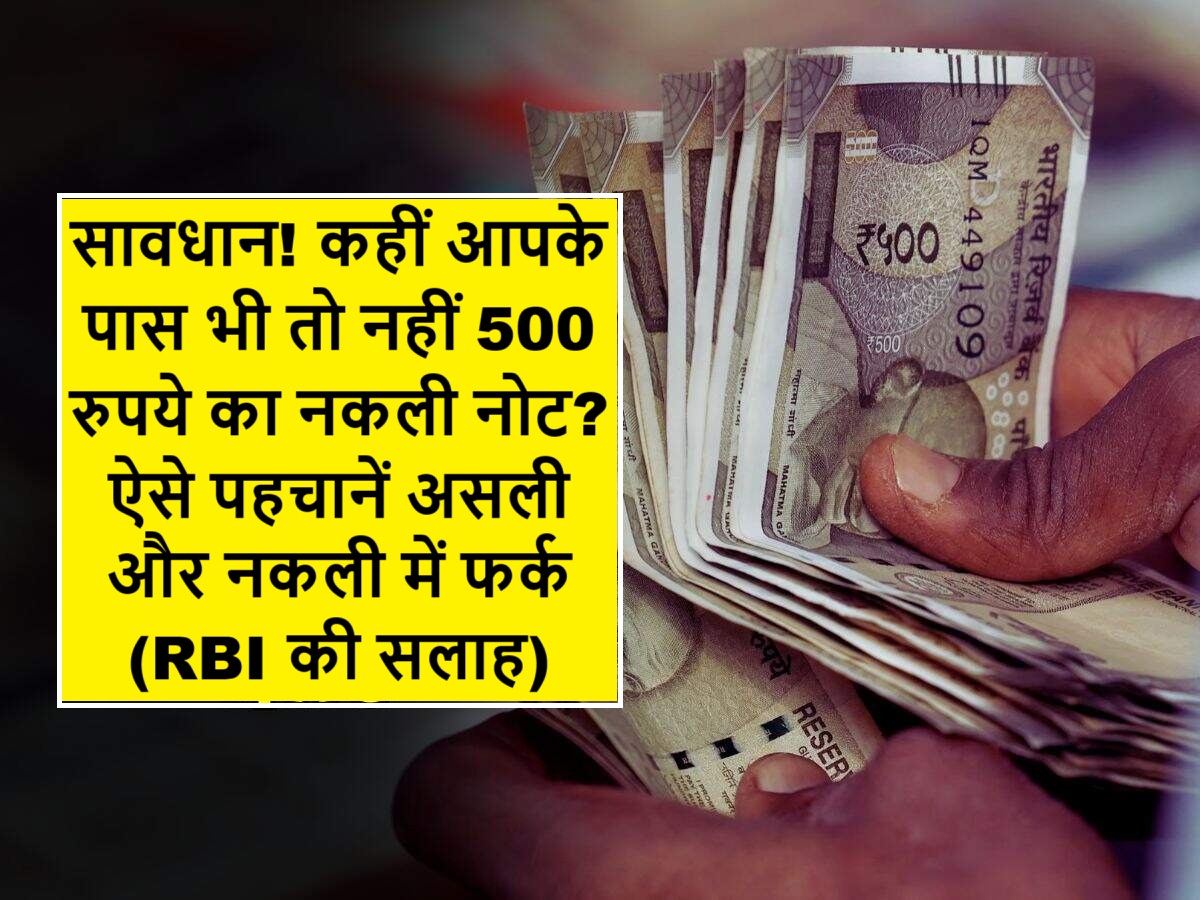Nowadays, there has been a lot of concern about fake notes of 500 rupees in the market. The government and the Reserve Bank of India (RBI) have also advised people to be careful and understand the difference between real-fake notes, so that no one is a victim of fraud. These fake notes are very real in appearance, but there are some nuances that you can easily identify them by paying attention to them.
How to identify the difference between real and fake note of 500 rupees?
Here are some easy ways by which you can check the reality of 500 rupee note:
-
Pay attention to spelling: Recently, it has been revealed that some fake notes are getting the fault of spelling. On the note where “Reserve Bank of India” is written, there may be ‘A’ instead of ‘A’ in the spelling of “Reserve” in fake notes. By paying attention to this small mistake, you can catch a fake note.
-
Security thread: The real 500 note contains a green security thread in the middle. When you look at the note lightly, the color of this thread turns from green to blue. ‘Bharat’ and ‘RBI’ are also clearly written on this thread. At the same time, this thread in fake notes will either be blurred, color will not change, or the handwriting of ‘India’ and ‘RBI’ written on it will be unclear.
-
Watermark: When you see the real 500 rupee note in front of the light, the light picture of Mahatma Gandhi and a 500 digit (it is called electrotype watermark) will appear on the empty space on the right side of the note. In fake notes this watermark will either disappear, will be very blurred or will not look clean.
-
Micro-Lettering of Lower letters: On the real note, ‘Bharat’ and ‘India’ are written in very small letters near Mahatma Gandhi’s picture and in some other places. You might be able to see them with magnifying glass (bigger mirror). Often these fine letters are not either in fake notes, or cannot be read.
-
Printing quality: The printing of the real note is very clean, fine and good quality. In this, Ashoka Pillar, picture of the Red Fort, photo of Mahatma Gandhi, everything looks very clear. While printing of fake notes often looks faded, thick or blurred, such as a bad printer.
-
Embroidered printing: On the real 500 rupee note, the picture of Mahatma Gandhi, the sign of the Ashoka Pillar, and some lines on the edges of the note are slightly embossed. You can feel this bulge by slowly turning a finger on the note. This is especially to help the people who have difficulty in seeing. This embossed printing in fake notes is either very low or not at all, they look flat.
-
Other signs: On the real note, the logo of Swachh Bharat and its slogan, the value of the note written in different languages in the middle, the picture of the red fort and the printing of the note are printed at a clean and right place. Fake notes may contain some of these things disappear, blurred or in the wrong place.
What to do if fake notes are found?
Whenever you take a 500 rupee note from someone, stop for a moment and check some things mentioned above. Do not panic if you suspect or get a fake note by mistake. Do not try to run it at all. Immediately give information about this at your nearest bank branch or police station.
Nowadays the best way to avoid fraud is to use digital payment such as UPI, net banking or card. Try to do most transactions in these ways.
The post be careful! Do you even have a fake note of 500 rupees? Identify the difference between real and fake (RBI’s advice) first appeared on News India Live | Breaking India News, The Indian Headline, India Express News, Fast India News.
